
3. Bore
3.1 Unmachined sensor
For use in flat cavity wall with sensor fitted at right angles to
cavity
• Bore and thread must be free of debris and shavings
• Accessories set Type 1300A81 may be used
3.1.1 Bore: Sensor with mounting nut Type 6457
Electrical discharge machine (EDM), mill or precision grind H7
Bore in hardened tool steel. Check centering and alignment.
Clean thread of debris and shavings.
Quick Start Installation
4 mm Cavity Pressure Sensor
Type 6157CA… (Unisens –9.4 pC/bar, 2 000 bar, 200 °C)
Type 6157CB… (Unisens –9.4 pC/bar, 2 000 bar, 300 °C)
Type 6177BA… (HighSens –45 pC/bar, 200 bar, 200 °C)
Type 6157CC… (Unisens –9.4 pC/bar, 2 000 bar, 200 °C)
Type 6157CD… (Unisens –9.4 pC/bar, 2 000 bar, 300 °C)
Type 6177BC… (HighSens –45 pC/bar, 200 bar, 200 °C)
Type 6167A... (–16,5 pC/bar, 200 bar, 200 °C)
1. General notes
• Sensor ø4 mm may not be machined
• Front of sensor must be clean and without notches
• Only use recommended installation accessories
• Do not use cable to pull sensor out of bore
Content
Front page: Machining the mold
1. General notes
2. Important areas of sensor bore
3. Bore
3.1 Unmachined sensor
3.2 Cavity-matched sensor
4. Cable channeling and connector
4.1 Single-wire cable technology
4.2 Coaxial cable
Rear page: Sensor installation, service and repair
5. Installing sensor
6. Installing cable and connector
6.1 Single-wire technology
6.2 Coaxial cable
7. Installing identification plate
8. Functional test
9. Service and repair
Foreword
Information in this document is subject to change without
notice. Kistler reserves the right to change or improve its
products and make changes in the content without obliga-
tion to notify any person or organization of such changes or
improvements.
© 2008 ... 2021 Kistler Group. All rights reserved. Products
of the Kistler Group are protected by various intellectual
property rights. For more information, visit: www.kistler.com.
1. Sensor contact surface must be flat and perpendicular
2. H7 bore to center sensor
3. Chamfer protects O-ring during installation
4. Not to be used to center sensor
5. Sharp edges reduce witness mark on part
3.1.2 Bore: Sensor with spacer sleeve Type 6459
EDM, mill or precision grind H7 hole in hardened tool steel.
Check centering and alignment. Clean thread of debris and
shavings.
• Bearing surface must be flat and perpendicular to hole
centerline
3.2 Cavity-matched sensor
For sloped, textured or free-form cavity walls, use the sensor
with anti-rotation pin Mat. No. 55251790 to be installed.
3.2.1 Hole to prevent rotation
Lock against rotation by providing a key that protrudes into the
hole. See drawing. Ensure correct alignment and eccentricity.
4. Cable channeling and connector
• Install cables in channels to simplify mold assembly
• Do not route cables next to hot runner cartridge
• Chamfer all sharp edges
• Cover open ducts/slots
4.1 Single-wire cable technology
The single-wire technology uses the tool steel to ensure elec-
trical shielding of the sensor signal. Thus the wiring is routed
through drilled holes.
• Single-wire cable must be completely enclosed in mold
• Single-wire cable may not be routed with power cables
4.1.1 Single-wire cut and grip connector Type 1839
Machine cable channel and recess for mounting plate.
Example shown: Drilled hole
2. Important areas of sensor hole
Be aware of the following important areas of the bore:
4.1.2 Multichannel single-wire connectors
Recess for 4-channel connector Type 1722A4...
Example channel:
Das Urheberrecht an dieser Zeic
hnung, die dem Empfän
ger per
-
sönlich anvertraut wird, verbleibt unserer Firma. Ohne unsere
schriftliche Genehmigung darf die Zeichnung weder kopiert noch
vervielfältigt, noch an Drittpersonen mitgeteilt oder zugänglich ge-
macht werden.
Interne und externe Fertigung
Änderung
100014863-08
Datum
15.09.2017
Erzeugersystem
Word 2003
Europäische
Projektion
Erste Proj.-Nr. Kopie Datum
UNISENS, Drucksensor D4
Spezifikations - Kontrollblatt
gez.
15.09.2017 Gta
k
ISTLER
Format
A4
Dokumentnummer Version
n
Blatt
1
gepr.
15.09.2017 Cau 6157CA__-00 b
Kistler Instrumente AG, Winterthur
Switzerland von
3
ges.
15.09.2017 Hoh
** feste Verlegung (≤ 10 mal verlegt) Rmin 5mm *optionales Zubehör
Kurzbeschreibung
Quarzkristall-Forminnendrucksensor zum Messen dynamischer und quasistatischer Drücke bis 2000 bar.
Der Sensor ist einsetzbar für Formtemperaturen bis 200°C.
Der Sensor wird auf eine Einheitsempfindlichkeit von -9,4 pC/bar abgeglichen.
6157CA__-00 - b - YS0 - SKB - interne und externe Fertigung - Freigegeben --- 18032203 6157C --- 09-Nov-2017 17:00 (CET) - [email protected]
Das Urheberrecht an dieser Zeic
hnung, die dem Empfän
ger per
-
sönlich anvertraut wird, verbleibt unserer Firma. Ohne unsere
schriftliche Genehmigung darf die Zeichnung weder kopiert noch
vervielfältigt, noch an Drittpersonen mitgeteilt oder zugänglich ge-
macht werden.
Interne und externe Fertigung
Änderung
100014863-08
Datum
15.09.2017
Erzeugersystem
Word 2003
Europäische
Projektion
Erste Proj.-Nr. Kopie Datum
UNISENS, Drucksensor D4
Spezifikations - Kontrollblatt
gez.
15.09.2017 Gta
k
ISTLER
Format
A4
Dokumentnummer Version
n
Blatt
1
gepr.
15.09.2017 Cau
6157CA__-00 b
Kistler Instrumente AG, Winterthur
Switzerland von
3
ges.
15.09.2017 Hoh
** feste Verlegung (≤ 10 mal verlegt) Rmin 5mm *optionales Zubehör
Kurzbeschreibung
Quarzkristall-Forminnendrucksensor zum Messen dynamischer und quasistatischer Drücke bis 2000 bar.
Der Sensor ist einsetzbar für Formtemperaturen bis 200°C.
Der Sensor wird auf eine Einheitsempfindlichkeit von -9,4 pC/bar abgeglichen.
6157CA__-00 - b - YS0 - SKB - interne und externe Fertigung - Freigegeben --- 18032203 6157C --- 09-Nov-2017 17:00 (CET) - [email protected]
Das Urheberrecht an dieser Zeic
hnung, die dem Empfän
ger per
-
sönlich anvertraut wird, verbleibt unserer Firma. Ohne unsere
schriftliche Genehmigung darf die Zeichnung weder kopiert noch
vervielfältigt, noch an Drittpersonen mitgeteilt oder zugänglich ge-
macht werden.
Interne und externe Fertigung
Änderung
100014863-08
Datum
15.09.2017
Erzeugersystem
Word 2003
Europäische
Projektion
Erste Proj.-Nr. Kopie Datum
UNISENS, Drucksensor D4
Spezifikations - Kontrollblatt
gez.
15.09.2017 Gta
k
ISTLER
Format
A4
Dokumentnummer Version
n
Blatt
1
gepr.
15.09.2017 Cau
6157CA__-00 b
Kistler Instrumente AG, Winterthur
Switzerland von
3
ges.
15.09.2017 Hoh
** feste Verlegung (≤ 10 mal verlegt) Rmin 5mm *optionales Zubehör
Kurzbeschreibung
Quarzkristall-Forminnendrucksensor zum Messen dynamischer und quasistatischer Drücke bis 2000 bar.
Der Sensor ist einsetzbar für Formtemperaturen bis 200°C.
Der Sensor wird auf eine Einheitsempfindlichkeit von -9,4 pC/bar abgeglichen.
6157CA__-00 - b - YS0 - SKB - interne und externe Fertigung - Freigegeben --- 18032203 6157C --- 09-Nov-2017 17:00 (CET) - [email protected]
3.2.3 Machining sensor front
Grind sensor front or install sensor in hole and then machine
complete cavity profile. Then remove sensor with extraction
tool Type 1315A (1362A). Clean hole and sensor.
• Only for uncoated Type 6157CA..., Typ 6157CB...,
Typ 6177BA... permitted
• Use extraction tool Type 1315A (Typ 1362A for
SensorType 6157CB...)
• Use cleaning spray Type 1003
Recess for 8-channel connector Type 1722A8...
6157C_002-759e-07.21

5. Installing sensor
• Ensure all sensor hole and threads are clean
• A chamfered cable channel or cable hole prevents
damaged cables
5.1 Sensor installation with mounting nut Type 6457
Install sensor into hole with extraction tool Type 1315A or
Type 1362A for Sensor Type 6157CB... and Type 6157CD...
. Tighten mounting nut Type 6457 with socket wrench Type
1383. Hand tighten with 2 N∙m torque.
8. Functional test
On completion of mold assembly, test sensor insulation and
sensitivity.
• Ensure that connector is dry
• Use cleaning spray Type 1003
8.1 Insulation test
Use insulation tester Type 5495 to check sensor insulation.
Resistance >1013 Ω.
8.2 Sensor functional check
Test the sensitivity of the installed sensor using Test Set Type
5495.
Sensor Type 6157C…: approx. measured value:
8,9 … 9,8 pC.
Sensor Type 6177B…: approx. measured value: 45pC
Sensor Type 6167A...: approx. measured value: 16,5 pC
• For sensor Type 6167A... use adapter Type
55124493.
9. Service and repair
Piezoelectric pressure sensors are maintenance-free. Insulation
and sensitivity of the installed sensor should, however, be
checked after each molding run.
• Ensure that connector is dry
• Cover sensor hole during cleaning
• Use cleaning spray Type 1003
9.1 Insulation test
See chapter 8.1.
9.2 Sensor functional check
See chapter 8.2.
9.3 Removing sensor
Remove sensor with extraction tool Type 1315A (Type 1362
for Sensor Type 6157CB...) or use a flat ejector pin to press
on the sensor front.
• Do not use a hammer on the sensor front
• Do not use a sharp center punch
9.4 Dismounting of cables
Fix Sensor with auxillary tool Type 3.050.175 and detach
cable with fork wrench AF 4/AF 5 Type 5.210.164.
9.5 Single-wire repair
Slightly damaged cables can be repaired using the Repair Kit
Type 1207. If single-wire cables have been severed, solder
ends, slide over Teflon tube and cover with shrink tubing.
• Do not overheat sensor and cable when using hot
air blower
9.6 Repairs at Kistler
Factory repairs at Kistler are arranged by the local sales office
Information: www.kistler.com
9.7 Disposal instructions for electrical and electronic
equipment
Do not discard old electronic instruments
in municipal trash. For disposal at end
of life, please return this product to an
authorized local electronic waste dispos-
al service or contact the nearest Kistler
Instrument sales office for return instruc-
tions.
• Do not preload sensor
• Do not exceed maximum torque of 2 Nm
• Take care not to wrap single-wire cable around
socket wrench
• Use extraction tool Type 1315A (Type 1362A for
Sensor Type 6157CB... / Type 6157CD...)
• Use socket wrench Type 1383 to tighten mounting
nut
5.2 Sensor installation with spacer sleeve Type 6459
Install sensor into hole with extraction tool Type 1315A (Type
1362 for Sensor Type 6157CB...) or directly with spacer
sleeve.
5.2.1 Machining spacer sleeve
Cut spacer sleeve so that it has an overlength of 2 … 3 mm.
Place sensor and sleeve into hole and determine exact length,
ensuring a clearance of 0,01 … 0,03 mm. Sleeve must be
ground so the end is square and planar. Remove any burrs.
For multi-cavity applications each spacer sleeve should be
numbered and allocated to a sensor.
5.2.2 Spacer sleeve and retaining plate
Install sensor and spacer sleeve. Ensure a clearance of 0,01 …
0,03 mm.
Sensor may not be preloaded when assembling the mold.
• Do not preload sensor
• Use extraction tool Type 1315A (Type 1362A for
Sensor Type 6157CB... / Type 6157CD...)
• For multi-cavity applications each spacer sleeve
should be numbered
6. Installing cable and connector
• Use a metal plate to cover open ducts/slots
• Attach cap and place on connector
6.1 Single-wire technology
• Single-wire cable must be completely enclosed in
the mold
• Single-wire cable may not be routed with power
cables
• Ensure that all contact surfaces and threads are clean
and dry
6.1.1 Cut & grip connection
Cut the single-wire cable to length and do not strip the
insulation. Loosen the knurled connector by hand without
removing the rear section.
6.1.2 Installing single-wire connector
Install connector and mounting plate in recess. Attach cap
using one of the screws. Place cap on open connector.
Installation of connector Type 1839 and mounting plate
6.2 Coaxial cable
6.2.1 Installation of coaxial connector
Install connector and mounting plate in recess. Attach cap
using one of the screws. Place cap on open connector.
7. Installing identification plate
Rivet plate to side of mold or fit with four M2,5 screws.
Kistler Group
Eulachstrasse 22
8408 Winterthur, Switzerland
Tel. +41 52 224 11 11
info@kistler.com www.kistler.com
Installation of multichannel connector
Example: Type 1722...
6157C_002-759e-07.21 © 2008 .... 2021, Kistler Group
Einbau 1722A_MB
Einbau 1722A_SB*
*Schneid-/Klemmtechnik
Type 1722A4__
Operating T < 120°
Type 1722A4__
Operating T < 120°
Mehrkanal-Stecker,WZ-Erken. SWire/Koax
Cadenas 1722A...
A4
0
2 / 2
1:1
measure. analyze. innovate.
Erstmals verwendet
Erste Proj.-Nr.
Werkstoff
Änderung
Datum
Massstab
Ersatz für
Kopie Datum
100011266
gez.
gepr.
ges.
20.05.2016 Len
Bsi
Len 100.257.686
Zeichnungs-Nr.
Material-Nr.
KIWAG-SWX_A4h
Ver.
Bl.
D-00212-C1
siehe Tabelle
öffentlich
Das Urheberrecht an dieser Zeichnung, die dem Empfänger
persönlich anvertraut wird, verbleibt unserer Firma.
Ohne unsere schriftliche Genehmigung darf die Zeichnung
weder kopiert noch vervielfältigt, noch an Drittpersonen
mitgeteilt oder zugänglich gemacht werden.
• Cover open channel to prevent cable damage
4.2 Coaxial cable
Machine cable channel and recess for mounting plate.
-
 1
1
-
 2
2
Kistler 6157C Schnellstartanleitung
- Typ
- Schnellstartanleitung
in anderen Sprachen
- English: Kistler 6157C Quick start guide
Verwandte Artikel
-
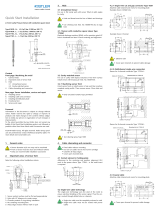 Kistler 6178C Schnellstartanleitung
Kistler 6178C Schnellstartanleitung
-
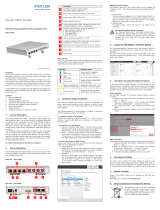 Kistler 5166A Schnellstartanleitung
Kistler 5166A Schnellstartanleitung
-
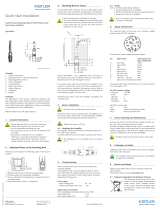 Kistler 4001A202FA2,0 Schnellstartanleitung
Kistler 4001A202FA2,0 Schnellstartanleitung
-
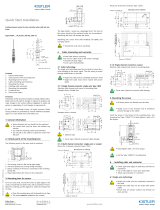 Kistler 6165AA Schnellstartanleitung
Kistler 6165AA Schnellstartanleitung
-
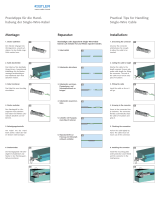 Kistler 1207 Schnellstartanleitung
Kistler 1207 Schnellstartanleitung
-
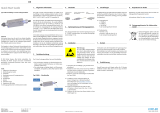 Kistler 5189A Schnellstartanleitung
Kistler 5189A Schnellstartanleitung
-
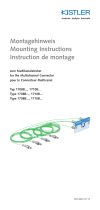 Kistler 1710B1 Bedienungsanleitung
Kistler 1710B1 Bedienungsanleitung
-
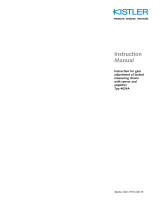 Kistler 4624AK Bedienungsanleitung
Kistler 4624AK Bedienungsanleitung
-
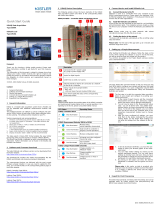 Kistler 5514A21D1 Schnellstartanleitung
Kistler 5514A21D1 Schnellstartanleitung
-
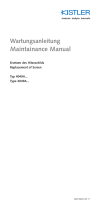 Kistler 4049B Bedienungsanleitung
Kistler 4049B Bedienungsanleitung











